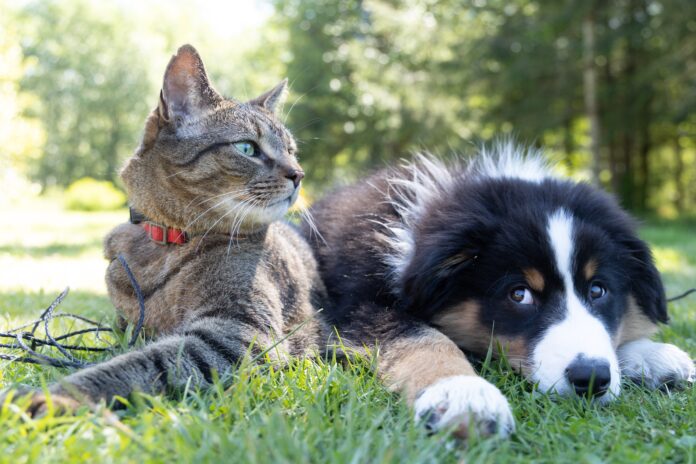
Are cats and dogs really so different? That’s what a recent study by UNLV’s Elizabeth Johnson, in collaboration with Boise State’s Shelly Volsche, asked in their most recent publication.
This study is an analysis of results of a survey conducted in April through May 2020 by Johnson and Volsche for a previous study. This new analysis is focused on the possible differences between the results of dog and cat owners, and the possible cultural reasons for these differences.
The study found that for the most part, the general themes of bonding with their pets and helping with the owners’ mental health were consistent with both dogs and cats. It did also find subtle differences between responses based on species. The differences found were mainly in the expectations depending on the animal companion.
“A dog might come off as more friendly,” Johnson said, “Whereas a cat, maybe they actually are more friendly, but we have these social assumptions that they’re independent. And so we don’t really connect as well.”
The study found that the dog owners seemed to engage in activities like training and other bonding exercises that were better for communication and understanding between pet and owner. Cat owners seemed to engage less in this way with their pets. However, it also showed that the increased time spent with cats in isolation helped owners grow closer to them.
“One of the things that we noticed for the cats that people were saying was, ‘I feel like my cats are more interested in interacting with me than before’,” Johnson said, “Because maybe if they spent more time with their cat, they would realize that they’re similar as far as care and affection [to dogs].”
The survey was originally for a previous study by Johnson and Volsche that analyzed how companion animals affected owners during the COVID-19 lockdown. This initial survey asked 234 Americans standard demographic questions followed by Likert scale questions to describe how they perceived their pets throughout the lockdown.
However both also noted that the inherent selection biases that come with surveys also affected this survey. These selection biases also prevented the survey from being accurately representative of the entire pet owning population.
Despite these limitations, that study found that companion animals like cats and dogs did have a positive impact on their owners’ ability to cope with the isolation brought by the COVID-19 lockdown.
Johnson has continued her work in understanding the bond between pets and owners, specifically with cats. Alongside this study, she also worked on another publication that analyzed the oxytocin response in female cat owners. That study found that certain intimate activities with cats, like petting or initially calling a pet cat, did have a positive response in oxytocin levels, but just the animal’s presence did not have the same connection.
Johnson hopes that the growing field of study on human-pet interactions specifically with cats will continue to further the general understanding of the animals. She also hopes that these advances can disprove some of the harmful cultural assumptions surrounding the felines.
“Unconscious bias can be influenced by perception and cultures,” said Johnson, “So I think if we have a better perception of cats in our society, we could understand the benefits of health and well-being in the relationship to cats, which would be helpful.”
